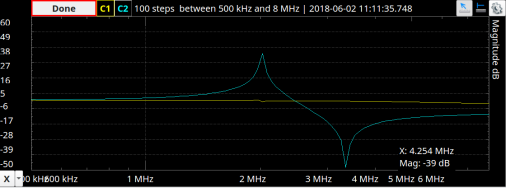We’ve read a lot about oscillators, but crystal oscillators seem to be a bit of a mystery. Hobby-level books tend to say, build a circuit like this and then mess with it until it oscillates. Engineering texts tend to go on about loop gains but aren’t very clear about practice. A [circuit digest] post that continues a series on oscillators has a good, practical treatment of the subject.
Crystals are made to have a natural resonant frequency and will oscillate at that frequency or a multiple thereof with the proper excitation. The trick, of course, is finding the proper excitation.
The post starts with a basic model of a crystal having a series capacitance and inductance along with a resistance. There’s also a shunt or parallel capacitor. When you order a crystal, you specify if you want the resonant frequency in series or parallel mode — that is, which of the capacitors in the model you want to resonate with the inductor — so the model has actual practical application.
 By applying the usual formula for resonance on the model you’ll see there is a null and a peak which corresponds to the two resonance points. The dip is the series frequency and the peak is the parallel. You can actually see a trace for a real crystal in a recent post we did on the Analog Discovery 2. It matches the math pretty well, as you can see on the right.
By applying the usual formula for resonance on the model you’ll see there is a null and a peak which corresponds to the two resonance points. The dip is the series frequency and the peak is the parallel. You can actually see a trace for a real crystal in a recent post we did on the Analog Discovery 2. It matches the math pretty well, as you can see on the right.
You might wonder if you could forego a crystal and just use the components in the model. In theory, yes. But the Q — the ratio of reactance to resistance — will be much lower than a crystal. A crystal is also more stable than typical resistors, capacitors, and inductors, which is why they find use where you need an actual accurate frequency. The high Q makes crystals useful in narrow-band filters, as well.
There are several common oscillators architectures, and a typical design procedure is to start with one and compute the values required. The post looks at a Colpitts oscillator. You can usually tell a Colpitts oscillator by remembering it starts with C and the feedback loop has a split capacitor (as opposed to a tapped inductor). The post also looks at Pierce oscillator and several digital oscillators. However, the post stops short of actually going through the design computations. However, it is still a lot of good information. If you can bias an inverting amplifier, you should be good to go.
You can test a crystal by injecting a resonant frequency into it. We’ve also seen SDRs pressed into service for testing.
No comments:
Post a Comment